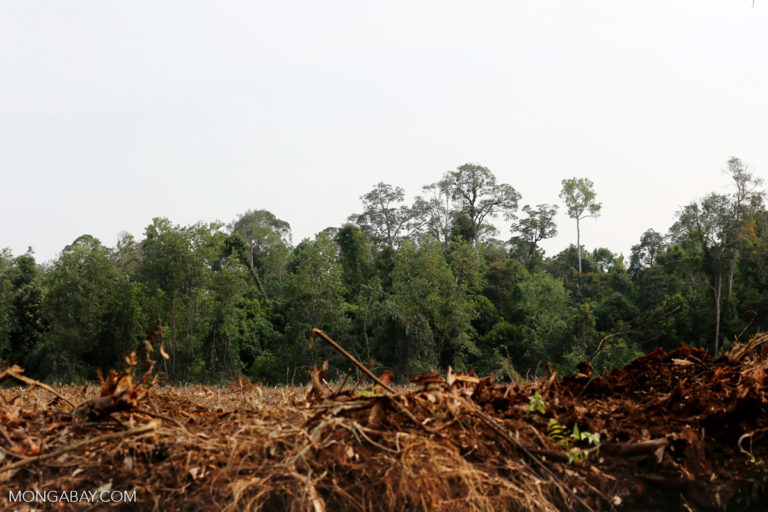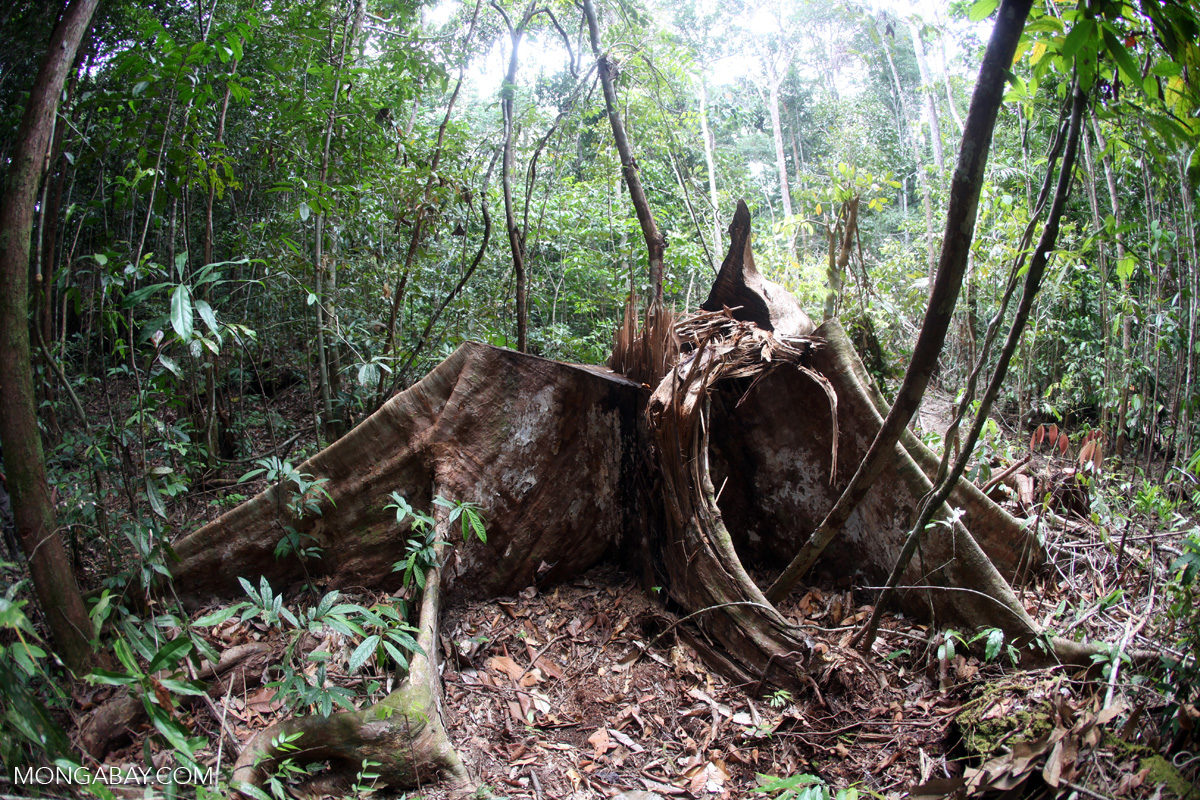- According to a new study, forest-rich nations could play a huge role in keeping the temperature rise under 2 degrees Celsius compared to pre-industrial levels, the key metric agreed to at the 2015 UN climate talks in Paris.
- Forests could account for a quarter of emissions reductions to meet targets in the Paris Agreement.
- However, the ways that countries measure emissions differ, making it difficult to track progress.
Forests hold extraordinary potential to check climate change, if they’re kept standing and allowed to siphon off planet-warming carbon. But sorting out how big that role can be – and what happens when forests get knocked down – isn’t easy.
Now, a new study in the journal Nature Climate Change reports that forest-rich nations could play a huge part in keeping the temperature rise under 2 degrees Celsius compared to pre-industrial levels, a goal that 195 countries agreed to pursue at the UN climate talks in Paris in 2015. But discrepancies in the way these countries assess the impact of forests on carbon emissions could frustrate attempts to keep the climate cool, said Joanna House, a climate scientist at the University of Bristol in the United Kingdom and an author of the study.

“There is no doubt forests have enormous potential,” House said in a statement. Efforts to curb deforestation, reforest cleared areas and protect standing forests could potentially account for a quarter of the emissions reductions required by 2030 to stay on target, she added.
Just how countries are using those strategies and what effects they’re having isn’t entirely clear, though. Nearly all of the countries that signed onto the Paris Agreement put forth estimates of their carbon emissions and reductions targets in what are known as intended nationally determined contributions – or INDCs.
But these INDCs aren’t uniform, as countries employ their own methods to come up with these calculations, House said. “Consequently, evaluating the expected effect of the land sector on the INDC mitigation targets is very complex,” she added.
Some countries tabulated expected emissions in metric tons of carbon dioxide, while others, including China and India, tied their INDC figures to their gross domestic products. Similarly, the years that countries chose as “reference points” were different. For example, one country might have chosen the amount of carbon it emitted in 1990 as its benchmark, and another might have chosen emissions levels from 2005.
Different countries sometimes used different years as benchmark levels of carbon emissions, for example.

That’s why House and her colleagues turned up striking differences when they compared these national projections with estimates from scientific research looking at forests and climate projections. As a result, lead author Giacomo Grassi, a forest ecologist at the EU’s Joint Research Centre in Ispra, Italy, has called for more transparency in how these estimates are computed.
“Tracking the mitigation potential of forests requires more confidence in numbers, including reconciling estimates between country reports and scientific studies,” Grassi said.
The difference in estimates amounted to roughly 3 metric gigatons (3 trillion kilograms) of carbon dioxide equivalent, the team found. That’s about 44 percent of what the United States emitted in 2014. Emissions from greenhouse gases – such as methane, ozone and nitrous oxide – are often bundled into a single measurement, referred to as ‘carbon dioxide equivalent,’ to express the chemical’s warming potential relative to carbon dioxide.
House noted “an urgency to reconcile” these inconsistencies to avoid stumbling along the way toward the goals set in Paris in 2015.
She added, “Without speaking a common language, conflicting numbers may undermine confidence in reaching targets, and progress toward the ‘below 2 [degrees Celsius]’ target cannot be properly assessed.”
CITATIONS:
- Adoption of the Paris Agreement Report No. FCCC/CP/2015/L.9/Rev.1 (2015). UNFCCC. http://unfccc.int/resource/docs/2015/cop21/eng/l09r01.pdf
- Grassi, G., House, J., Dentener, F., Federici, S., den Elzen, M., & Penman, J. (2017). The key role of forests in meeting climate targets requires science for credible mitigation. Nature Climate Change. https://doi.org/10.1038/nclimate3227
Banner image of a recently cut rainforest tree in Indonesia by Rhett A. Butler.
FEEDBACK: Use this form to send a message to the author of this post. If you want to post a public comment, you can do that at the bottom of the page.
